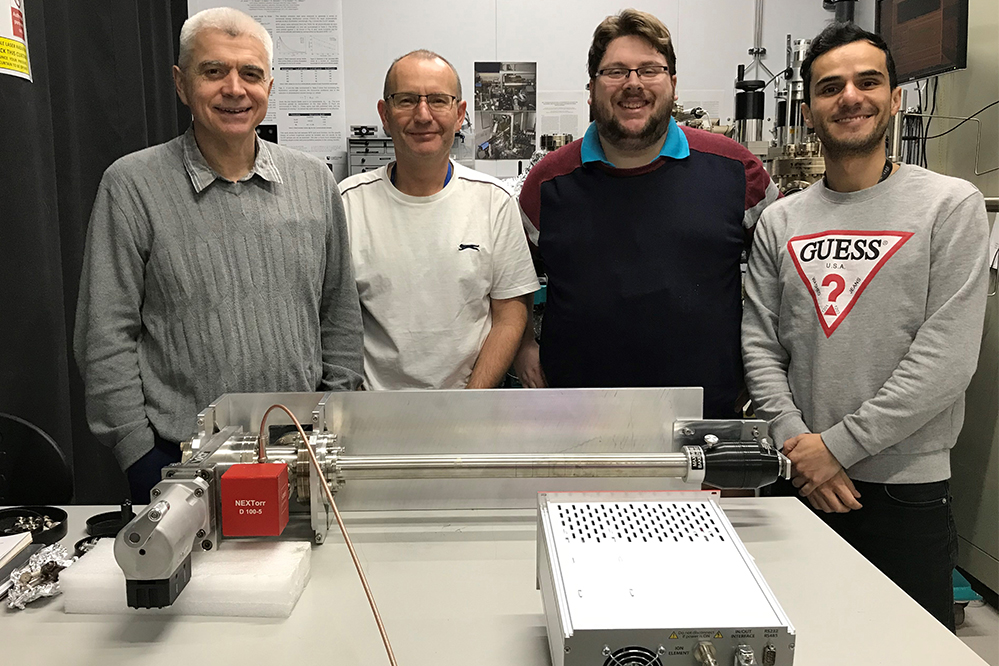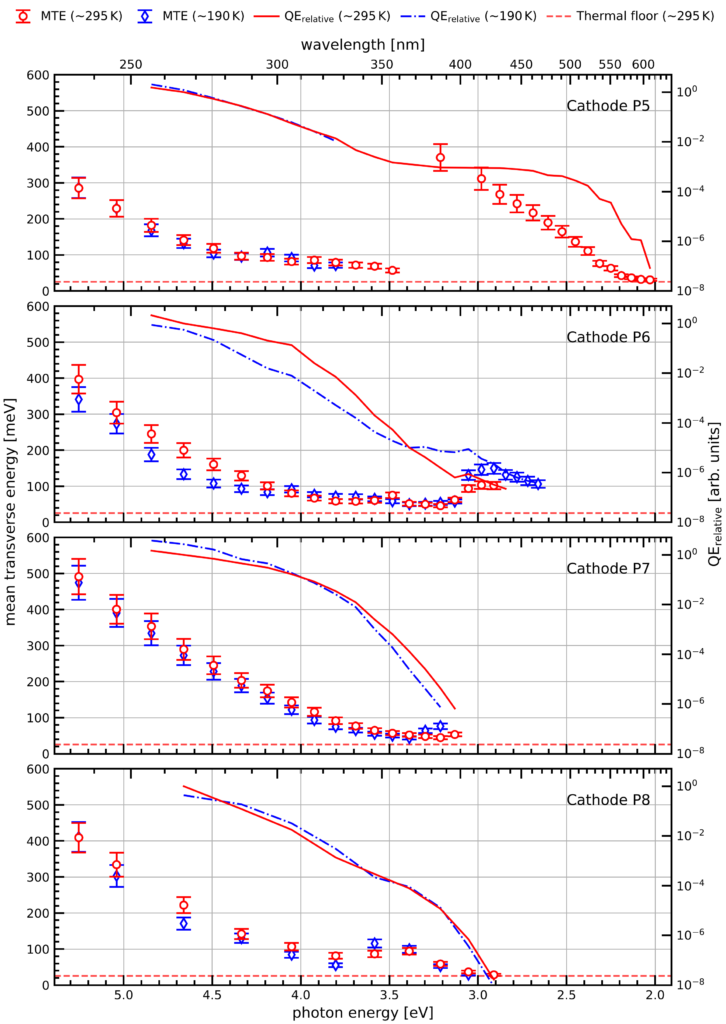Daresbury Laboratory has been part of an active and productive collaboration with CERN for many years, focussing on photocathode preparation and characterisation. Recognising Daresbury’s unique capabilities in photocathode characterisation, CERN initiated the collaboration with the aspiration of measuring the performance of their caesium telluride (CsTe) photocathodes. This proposition was particularly attractive to Daresbury as their research and development efforts were already moving towards CsTe photocathodes. Thus, the collaboration presented a mutually beneficial opportunity. CsTe photocathodes have been used as electron sources for particle accelerators for many years and are notable for their high level of emission efficiency (known as quantum efficiency) and operational robustness (lifetime).

To facilitate this work, a team from Daresbury Laboratory and the Cockcroft Institute designed and constructed a vacuum suitcase which would connect to the photocathode deposition system at CERN, but which could also be easily transported overland between the CERN and Daresbury. CERN deposited four CsTe photocathodes and sequentially loaded them into the suitcase. Once loaded, this was disconnected from their deposition system, loaded into a van and driven through France directly to the STFC Daresbury Laboratory in the UK. The suitcase was then connected to the unique Transverse Energy Spread Spectrometer known as ‘TESS’, and the CERN CsTe cathodes unloaded. TESS was used to and characterise their performance, measuring their electron emission intensity and energy spread over a range of illumination wavelengths in the UV range. This data was complemented by a chemical analysis using X-ray Photoelectron Spectroscopy (XPS) to determine the chemical composition of the photoemissive CsTe surface.
In a recently published paper, analysis of the data from TESS showed that the energy spread exhibited by some of the photocathodes was higher than expected, and the spectral response was much wider. The accepted emission threshold for CsTe is generally observed around 350 nm. However, using TESS, the team made a remarkable discovery: they could detect photoemission from these cathodes at wavelengths extending far beyond this threshold, reaching up to 500 nm in the visible spectrum. The researchers found an explanation for this in the study of the XPS chemical composition data which indicated the presence of chemical species on the surfaces which have lower work functions than CsTe.

These species will readily photoemit when the cathode is illuminated at wavelengths which are significantly beyond (longer) than the emission threshold for CsTe itself. It must be noted that the emission efficiency known as the quantum efficiency is very low at these long illumination wavelengths, typically 4 to 6 orders of magnitude below that for the dominant CsTe photoemission.
However, when the cathode is operated in a real accelerator electron source and exposed to high-power laser illumination at 266 nm, the energy spread of the electrons emitted by those non-CsTe species significantly increases. This drives a strong level of electron emission with a reasonably low energy spread from the dominant CsTe species on the photocathode surface, but those electrons emitted by the other chemical species on the surface will have a much higher energy spread.
The work highlights the need to understand and control the surface chemistry of deposited photocathodes such as CsTe to ensure that the spectral response and energy spread of the cathodes is correct.
The full article can be found here:
Mean transverse energy, surface chemical and physical characterization of CERN-made Cs-Te photocathodes, L. B. Jones, H. Panuganti, C. Benjamin, E. Chevallay, H. M. Churn, V. Fedosseev, T. C. Q. Noakes, L. A. J. Soomary, and C. P. Welsch, Phys. Rev. Accel. Beams 27, 023402
